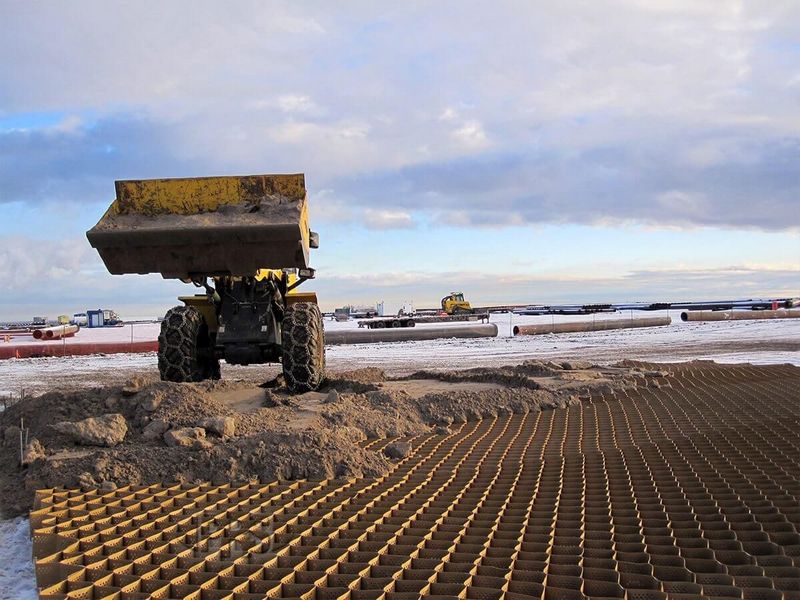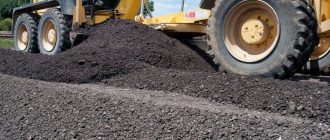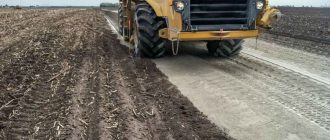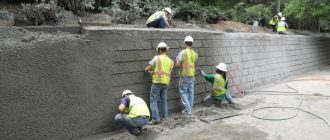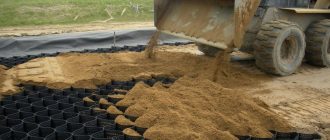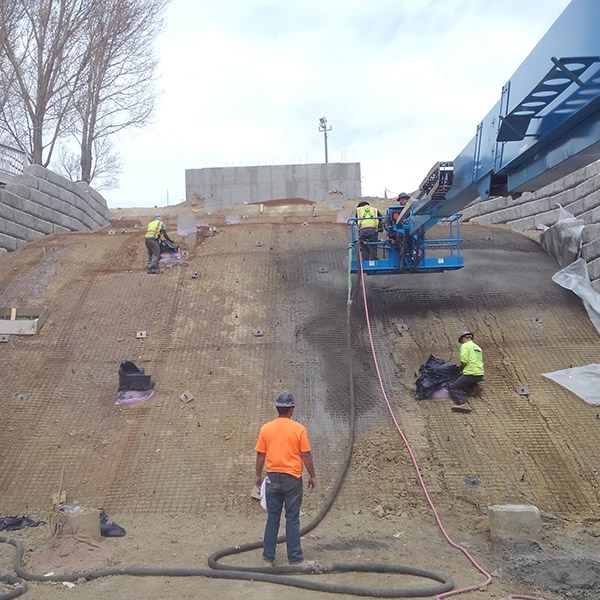
Soil Stabilization Methods for Better Ground Stabilization
When it comes to achieving a better and more stable ground, soil stabilization methods are essential. These methods help to enhance the structural integrity of the soil, preventing erosion and improving overall stability.
Ground stabilization techniques involve the use of various materials and engineering techniques to strengthen the soil and make it capable of supporting heavy loads. One such method is the use of geogrids, which are used to reinforce and stabilize the soil by adding tensile strength.
The process of soil stabilization involves the controlled compaction and addition of additives to the soil to increase its strength and load-bearing capacity.
Better soil stabilization methods also include the use of chemical additives such as lime, cement, or fly ash, which can significantly improve the soil’s properties. These additives react with the soil particles, forming stable bonds and enhancing its strength and durability.
Importance of Ground Stability
Ground stability is a critical factor in ensuring the successful completion of any construction project. Whether it’s a small residential building or a large-scale infrastructure project, the stability of the ground is paramount for the safety and longevity of the structure.
Soil stabilization methods play a vital role in achieving a better ground stability. By improving the strength and durability of the soil, these methods help prevent ground settlement, soil erosion, and other issues that can compromise the stability of the ground.
One of the key advantages of soil stabilization is its ability to enhance the load-bearing capacity of the ground. By increasing the soil’s strength and stability, it can better support the weight of the structures built on top of it. This is especially crucial for structures that need to withstand heavy loads, such as bridges, highways, and industrial facilities.
In addition to improving the load-bearing capacity, soil stabilization also helps mitigate the effects of soil erosion. Unstable ground can be prone to erosion, which can lead to the loss of soil and the formation of sinkholes. By stabilizing the soil, these risks can be minimized, ensuring the long-term stability of the ground.
The proper stabilization of soil also helps in preventing ground settlement. Without adequate stabilization, the ground may undergo settlement, causing unevenness and subsidence in the structure. This can lead to significant structural damage and compromise the safety of the building or infrastructure.
Overall, prioritizing ground stability through effective soil stabilization methods is essential for ensuring the success and longevity of any construction project. By investing in proper stabilization techniques, you can create a solid foundation for your structures and mitigate risks associated with unstable ground, leading to safer and more durable constructions.
Challenges of Unstable Soil
Unstable soil can pose several challenges for construction projects and infrastructure development. It can lead to structural damage, foundation failures, and even landslides. Therefore, it is crucial to address these challenges with better soil stabilization methods.
Unstable soil lacks the necessary strength and load-bearing capacity required for supporting structures. It may contain excessive moisture, weak clay deposits, or loose sand, making it susceptible to movement and settlement. Such soil conditions can compromise the stability and integrity of foundations, roads, and other structures.
Another challenge of unstable soil is the susceptibility to erosion. When exposed to water or wind, the top layer of the soil can be easily washed away or blown off, leading to the loss of fertile soil and the formation of gullies. This erosion can further exacerbate the instability and decrease the overall soil quality on a site.
To overcome these challenges, various soil stabilization methods are available. These methods aim to improve the engineering properties of the soil, enhance its load-bearing capacity, and reduce the risk of settlement and erosion. Common techniques include soil compaction, chemical stabilization, and the use of geosynthetics.
Soil compaction involves compacting the soil layers to increase their density and improve their stability. This can be achieved through mechanical means, such as using rollers or vibratory compactors, or through static compaction methods like ramming or tamping.
Chemical stabilization involves the addition of chemical agents to the soil to enhance its physical properties. These chemicals can bind the soil particles together, reduce moisture content, and increase overall strength. Lime, cement, and fly ash are commonly used chemical stabilizers.
Geosynthetics, such as geotextiles and geogrids, provide a physical barrier that helps distribute loads and reinforce the soil. They can stabilize the soil by preventing movement and improving its strength and permeability.
By employing these better soil stabilization methods, the challenges of unstable soil can be effectively addressed, resulting in improved ground stability and safer construction projects.
Understanding Soil Stabilization
Soil stabilization refers to the various methods employed to improve the stability of the ground. It involves implementing techniques that enhance the strength and durability of soil, making it suitable for construction and other applications.
There are different methods of soil stabilization, each with its own advantages and applications. These methods aim to mitigate issues such as soil erosion, settlement, and poor load-bearing capacity.
One common method of soil stabilization is chemical stabilization, which involves the addition of chemical additives to improve the properties of soil. These additives can enhance the binding capacity of soil particles and increase its resistance to water infiltration and erosion.
Mechanical stabilization is another method that involves physically altering the soil to improve its stability. This can include techniques such as compaction, which increases soil density, and reinforcement, which involves the use of geosynthetic materials to provide additional strength and support.
In some cases, soil stabilization may also involve biological methods, such as the use of vegetation or microorganisms to enhance soil stability. These natural methods can help control erosion, improve soil structure, and promote the growth of beneficial microorganisms.
Understanding soil stabilization is crucial for ensuring the long-term stability of ground surfaces. By implementing effective soil stabilization methods, it is possible to improve the performance and durability of soil, making it suitable for a wide range of applications, from road construction and building foundations to slope stabilization and erosion control.
Common Soil Stabilization Methods
There are several methods available for achieving better ground stabilization. These methods are used to improve the stability of soil and prevent erosion, settlement, and other ground-related issues. Here are some common soil stabilization methods:
- Chemical Stabilization: This method involves the use of chemicals to improve the properties of the soil and make it more stable. Chemical additives, such as lime, cement, or fly ash, are mixed with the soil to increase its strength and reduce its susceptibility to erosion.
- Mechanical Stabilization: In this method, physical techniques are used to improve the stability of the soil. Some common mechanical stabilization methods include compaction, grouting, and vibrocompaction. These methods help to densify the soil and increase its load-bearing capacity.
- Terracing: Terracing is a method used to stabilize sloping ground. It involves the construction of terraces or steps on the slope to reduce the angle of the slope and prevent erosion. This method is commonly used in hilly areas for agricultural purposes.
- Structural Stabilization: Structural stabilization involves the use of structural elements, such as retaining walls or geosynthetic materials, to stabilize the soil. These elements provide additional support to the ground and prevent slope failure or movement.
- Biological Stabilization: Biological stabilization methods use plants or vegetation to stabilize the soil. Plants help to absorb excess water, reduce erosion, and improve the overall stability of the ground. This method is commonly used in landscaping or erosion control applications.
These are just a few examples of the methods available for soil stabilization. The choice of method will depend on the specific ground conditions and project requirements. It is important to consult with a soil stabilization expert to determine the most suitable method for your needs.
Mechanical Soil Stabilization Techniques
In addition to chemical and biological methods, mechanical soil stabilization techniques are highly effective in improving ground stability. These methods involve the use of various mechanical processes to reinforce and strengthen soil, creating a better foundation for construction projects.
One such method is soil compaction, where heavy machinery is used to compact the soil, reducing its volume and increasing its density. This results in a more stable ground that can better support structures and prevent settlement.
Another mechanical technique is soil reinforcement, which involves the use of materials such as geotextiles or geogrids to enhance the strength and stability of the soil. These materials are placed within the soil to create a reinforced zone, providing additional support and preventing ground movement.
Soil stabilization can also be achieved through the process of soil densification, where the soil is subjected to excessive pressure to increase its density and strength. This method is commonly used in areas with loose or weak soils, as it significantly improves the load-bearing capacity of the ground.
The mechanical stabilization methods not only improve ground stability but also offer long-lasting results. By using these techniques, construction projects can ensure a solid and stable foundation, minimizing the risk of structural damage or failure.
Choosing the right mechanical soil stabilization method for your project is crucial. Consulting with a professional geotechnical engineer can help determine the most suitable technique based on the specific soil conditions and project requirements.
With mechanical soil stabilization techniques, you can ensure a stable and strong ground that will support your construction projects with utmost safety and durability.
Chemical Soil Stabilization Methods
Chemical soil stabilization methods are commonly used to improve ground stability and enhance soil properties. These methods involve the application of various chemical agents to the soil, which help in binding soil particles together and creating a better and more stable ground.
One chemical soil stabilization method is the use of lime. Lime is often used to stabilize clay soils, as it helps in altering the properties of clay and improving its stability. Lime reacts with clay minerals, making them more cohesive and reducing their plasticity. This results in a stronger and more stable ground, making it suitable for construction purposes.
Cement is another commonly used chemical for soil stabilization. Cement, when mixed with soil, forms a strong and durable concrete-like material, which provides improved ground stabilization. It helps in binding soil particles together and creating a more rigid and stable ground. Cement stabilization is often used in road construction and other infrastructure projects.
Polymeric materials, such as polymers and resins, are also used for chemical soil stabilization. These materials are added to the soil, where they react and form a strong and stable bonding matrix. Polymeric soil stabilization methods are popular for improving the stability of loose and sandy soils, as they help in binding soil particles and increasing their shear strength.
Chemical soil stabilization methods offer several advantages over other soil stabilization techniques. They can be easily applied to a wide range of soil types, making them a versatile option. Additionally, chemical stabilization methods are cost-effective and can result in long-term improvement in ground stability. They also provide environmental benefits by reducing the need for excavation and the use of natural resources.
- Lime stabilization
- Cement stabilization
- Polymeric soil stabilization
Overall, chemical soil stabilization methods offer effective solutions for improving ground stability and creating a better and more stable soil foundation for various construction projects.
Biological Soil Stabilization Approaches
Biological soil stabilization is a set of methods that utilize living organisms to improve the stability of soil and ground. These approaches harness the power of nature to strengthen and protect soil, providing long-term stability and sustainability.
One method of biological soil stabilization is the use of plant roots. Plant roots, especially those of certain species like grasses and legumes, have the ability to penetrate and bind soil particles, creating a network of root systems that hold the soil together. This increases the cohesion and shear strength of the soil, reducing the risk of erosion and instability. Using vegetation to stabilize soil is not only cost-effective but also environmentally friendly, as it promotes biodiversity and reduces the need for chemical stabilization methods.
Another approach is the use of microorganisms. Certain bacteria and fungi have the ability to produce compounds that bind soil particles together, forming aggregates that improve soil structure and stability. These microorganisms can be introduced to the soil through inoculation, where they colonize and establish themselves, providing long-term stabilization benefits. This method is particularly effective in areas with poor soil quality or high erosion risks.
Biological soil stabilization approaches offer numerous advantages over traditional stabilization methods. They are sustainable, as they rely on natural processes and do not require ongoing maintenance or inputs. They also promote soil health and fertility, as the presence of living organisms enhances nutrient cycling and organic matter decomposition. Additionally, biological stabilization methods are often more cost-effective, as they utilize natural resources and require less intensive construction work.
In conclusion, biological soil stabilization approaches provide effective and sustainable solutions for improving ground stability. By harnessing the power of plant roots and microorganisms, these methods offer long-term benefits while promoting environmental health and resilience.
Geosynthetic Soil Stabilization Solutions
Geosynthetic soil stabilization solutions are innovative methods that improve the stability of the ground. By using geosynthetics, such as geotextiles, geogrids, and geocells, soil stabilization becomes more efficient and effective.
Geosynthetics act as reinforcements, distributing loads and reducing soil movement. They provide better support for structures and prevent soil erosion. Geosynthetic soil stabilization solutions are widely utilized in various industries, including civil engineering, construction, and environmental protection.
Geotextiles are commonly used in geosynthetic soil stabilization. They are permeable fabrics that act as a separator, preventing mixing between different soil layers. Geotextiles also improve filtration and drainage, making the ground more stable and resistant to erosion.
Geogrids are another geosynthetic solution for soil stabilization. They consist of a grid structure made of polymer materials. Geogrids are used to stabilize and reinforce soil slopes, retaining walls, and embankments. They enhance the bearing capacity of the ground, preventing settlement and deformation.
Geocells, also known as cellular confinement systems, are three-dimensional honeycomb-like structures made of high-density polyethylene. They are filled with soil or other aggregates and used to stabilize soft or weak ground. Geocells improve load distribution and increase the friction between particles, providing better stability and preventing lateral movement.
In summary, geosynthetic soil stabilization solutions offer a range of benefits, including better ground stability, increased load-bearing capacity, reduced soil movement, and improved erosion control. These methods are cost-effective and environmentally friendly alternatives to traditional soil stabilization techniques.
| – Enhanced ground stability |
| – Increased load-bearing capacity |
| – Reduced soil movement and deformation |
| – Improved erosion control |
| – Cost-effective and environmentally friendly |
Benefits of Effective Soil Stabilization
Effective soil stabilization methods provide numerous benefits for achieving better ground stability. By implementing these methods, you can enhance the overall quality of the soil, making it more reliable and durable for various applications.
One of the key benefits of effective soil stabilization is the improved load-bearing capacity of the soil. By stabilizing the soil, you can increase its strength and ability to withstand heavy loads and traffic. This is particularly important in construction projects where the stability of the ground is crucial to ensure the safety and longevity of structures.
Another advantage of effective soil stabilization is the reduction in soil erosion. Stabilizing the soil helps in preventing the erosion of topsoil, which can cause significant damage to the environment and nearby water sources. By maintaining the integrity of the soil, you can preserve the natural vegetation and protect against sedimentation in rivers, lakes, and other bodies of water.
Furthermore, proper soil stabilization methods contribute to improved dust control. Unstable soil can generate excessive dust, which can be hazardous to the health of both workers and the general public. By implementing effective soil stabilization techniques, you can reduce the amount of dust released into the air, creating a safer and healthier environment for everyone.
Additionally, effective soil stabilization methods can help in reducing the overall maintenance costs of an area. By stabilizing the soil, you can minimize the need for frequent repairs and maintenance work. This not only saves time and money but also ensures a longer lifespan for roads, pavements, and other structures built on the stabilized soil.
In summary, opting for effective soil stabilization methods brings numerous benefits, including improved load-bearing capacity, reduced soil erosion, better dust control, and lower maintenance costs. By investing in soil stabilization, you can ensure the overall stability and longevity of your projects while also prioritizing environmental protection.
Case Studies of Successful Soil Stabilization Projects
Soil stabilization plays a crucial role in ensuring the stability and durability of various construction projects. Here are some case studies that highlight the successful implementation of soil stabilization methods:
-
Highway Construction
One of the major challenges in highway construction is to maintain the ground stability in areas with poor soil conditions. A project was undertaken to stabilize the soil along a highway stretch that experienced frequent road failures due to unstable ground. By implementing an effective soil stabilization method, the ground stability was significantly improved, resulting in a better, safer, and more durable highway.
-
Building Foundations
Building foundations are critical in ensuring the structural integrity of any construction project. In a case study involving the construction of a high-rise building on soft soil, soil stabilization techniques were employed to strengthen the ground and enhance its load-bearing capacity. The successful implementation of these methods resulted in a stable foundation and a better, more secure building.
-
Infrastructure Development
Infrastructure development projects often face challenges in areas with loose or unstable soil. In a recent case study, soil stabilization methods were used to improve the ground stability in the construction of a bridge over a river. By stabilizing the soil, the bridge’s foundation was strengthened, ensuring its long-term durability and providing a safe passage for vehicles.
These case studies exemplify the importance of soil stabilization in achieving better ground stability and ensuring the success of various construction projects. By implementing effective soil stabilization methods, engineers and contractors can overcome soil-related challenges and create long-lasting and secure structures.
Future Trends in Soil Stabilization Techniques
In the world of construction and civil engineering, soil stabilization techniques continue to evolve and improve in order to provide better ground stability and ensure the longevity of structures. As technology advances, new and innovative methods are being developed to enhance the effectiveness of soil stabilization.
One future trend in soil stabilization techniques is the use of advanced geosynthetics. Geosynthetics are synthetic materials that are used to improve ground conditions. These materials have proven to be effective in stabilizing soil and preventing erosion. With ongoing research and development, geosynthetics are expected to become even more versatile and efficient in the coming years.
Furthermore, the use of bio-based soil stabilizers is another emerging trend in this field. Bio-based stabilizers, derived from natural sources such as plants or microbes, have shown promise in improving soil strength and reducing environmental impact. As the demand for environmentally friendly solutions continues to grow, the use of bio-based stabilizers is expected to gain traction.
Additionally, the adoption of advanced monitoring and testing methods is crucial for better understanding soil behavior and selecting appropriate stabilization methods. These methods involve the use of sensors and remote monitoring technologies to collect data on soil properties and performance. By analyzing this data, engineers can make informed decisions about the most effective soil stabilization methods for a particular site.
The integration of artificial intelligence (AI) and machine learning algorithms is also expected to play a significant role in future soil stabilization techniques. AI can analyze complex data sets and identify patterns that human experts may not be able to detect. By leveraging AI capabilities, engineers can optimize soil stabilization strategies and achieve better outcomes in terms of ground stability.
| – Improved ground stability |
| – Increased structural longevity |
| – Enhanced environmental sustainability |
| – Cost-effective solutions |
In conclusion, the future of soil stabilization techniques holds great promise for better ground stability. The advancements in geosynthetics, bio-based stabilizers, monitoring methods, and AI integration offer opportunities to create more effective and sustainable solutions. By staying up-to-date with the latest trends in soil stabilization, engineers and construction professionals can ensure the success and longevity of their projects.
Question-answer:
What are some effective soil stabilization methods?
Some effective soil stabilization methods include chemical stabilization, mechanical stabilization, and vegetation stabilization. Chemical stabilization involves the use of chemical additives to improve the soil’s properties and increase its strength. Mechanical stabilization methods include compacting the soil or adding soil reinforcement materials like geotextiles. Vegetation stabilization involves planting vegetation to help control erosion and stabilize the soil.
How does chemical stabilization work?
Chemical stabilization works by adding chemical additives to the soil to improve its properties. These additives can include cement, lime, or fly ash. The chemicals react with the soil particles, causing them to bind together and increasing the soil’s strength. This helps to prevent erosion and improve ground stability.
What are the benefits of mechanical stabilization?
Mechanical stabilization offers several benefits. It can increase the load-bearing capacity of the soil, making it suitable for construction purposes. It can also help to prevent erosion and improve the stability of sloping areas. Additionally, mechanical stabilization methods are often cost-effective and can be relatively easy to implement.
How does vegetation stabilization work?
Vegetation stabilization works by planting suitable vegetation in an area to help control erosion and stabilize the soil. The roots of the plants bind the soil particles together, reducing the risk of erosion caused by wind or water. Vegetation also helps to absorb excess moisture from the soil, preventing saturation and improving ground stability.
Are there any disadvantages to soil stabilization methods?
There can be some disadvantages to soil stabilization methods. Chemical stabilization methods can be expensive, especially if large quantities of additives are needed. Mechanical stabilization methods may require heavy machinery and can be time-consuming. Vegetation stabilization methods can take time for the vegetation to establish and may require ongoing maintenance. It is important to carefully consider the specific requirements of a project before selecting a soil stabilization method.
What is the main purpose of “Effective Soil Stabilization Methods for Improved Ground Stability”?
The main purpose of “Effective Soil Stabilization Methods for Improved Ground Stability” is to provide techniques and methods to stabilize soil and improve ground stability in various construction and engineering projects.

